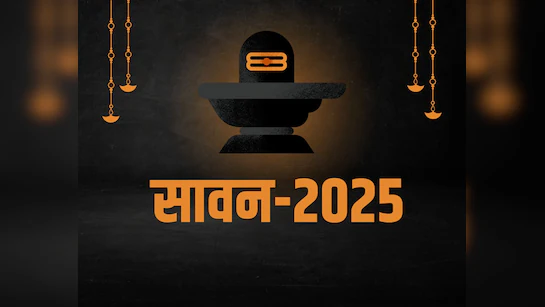The month of Sawan (Shravana) holds a special place in the hearts of millions of Hindus around the world. Dedicated to Lord Shiva, Sawan is considered the most auspicious period for spiritual practices, fasting, and devotional worship. In 2025, the lunar month of Shravana is set to begin on July 18, 2025, and conclude on August 16, 2025 (dates may vary slightly by region and local panchang). This 30-day period is marked by numerous festivals, rituals, and traditions that honor the divine and offer devotees an opportunity for purification, penance, and inner growth.
1. The Significance of Sawan
Sawan derives its name from the Sanskrit word ‘Shravana,’ which means “to listen.” According to Hindu mythology, this month commemorates the celestial event when the gods churned the ocean (Samudra Manthan) and Lord Shiva consumed poison (Halahala) to save the universe. The legend underscores Shiva’s compassion and willingness to bear suffering for the greater good. During Sawan, devotees reflect on these qualities of sacrifice and devotion, deepening their connection to the divine.
The Panchanga (Hindu calendar) designates Shravana as the fifth month of the lunar calendar, characterized by the waxing and waning phases of the moon. Mondays in this month—known as Sawan Somvar—are especially revered. Fasting on these Rāhu-kāla Mondays and offering special prayers in Shiva temples are believed to bring blessings, prosperity, and relief from ailments.
2. Start Date and Panchang Details
In 2025, Sawan is set to begin on July 18 at the time when the moon transitions into its Shukla Paksha (waxing phase) under the auspices of Pushya Nakshatra. Regional variations in sunrise and moonrise times may adjust the start by a few hours, so consulting a local panchang or temple schedule is recommended. The month will close at the end of August 16, culminating in the festival of Raksha Bandhan—a celebration of sibling bonds that carries deep spiritual undertones in the context of familial duty and protection.
Key Panchang elements for the start of Sawan 2025:
- Tithi: Pratipada (1st day) of Shukla Paksha
- Nakshatra: Pushya
- Day: Friday
- Laghu Masa Dynamics: Some regions may observe an intercalary adjustment (Adhik Masa) if astronomical calculations require it, but 2025 does not include an extra month in most calendars.

3. Rituals and Vrat (Fasting) Practices
3.1 Sawan Somvar Vrat
Fasting on Mondays during Sawan is perhaps the most popular observance. Devotees wake before sunrise, take a purifying bath, and visit Shiva temples bearing offerings:
- Bilva patra (golden leaf of the Bel tree) symbolizing devotion and purity
- Milk, water, and honey poured over the Shiva Lingam (Abhishekam)
- Flowers and incense during the aarti (ritual lamp ceremony)
Many observe a nirjala (water-only) fast, while others opt for a phalahar fast (fruit-based diet). The fast is broken after evening prayers, with a simple meal of fruits, milk, and sattvic (pure) food.
3.2 Jal Abhishekam and Temple Ceremonies
On special days like Somvar, devotees may organize Jal Abhishekam, a collective water-offering ceremony at Shiva temples. Participation enhances the community spirit and amplifies spiritual merit. Temples across India—such as Somnath (Gujarat), Kashi Vishwanath (Varanasi), and Mahakaleshwar (Ujjain)—see throngs of pilgrims during this month.
3.3 Mantra Chanting and Meditation
Devotees often recite the Maha Mrityunjaya Mantra and the Om Namah Shivaya repeatedly, believing that these chants reduce karmic baggage and foster mental tranquility. Daily meditation sessions focused on Shiva’s form and attributes help practitioners cultivate equanimity and compassion.
4. Major Festivals within Sawan 2025
4.1 Nag Panchami (August 1, 2025)
Falling on the fifth day of Shukla Paksha, Nag Panchami honors the serpents associated with Lord Shiva. Devotees offer milk and flowers to snake deities and seek protection from venom and adversities.
4.2 Hariyali Teej (August 5, 2025)
Observed largely by women in North India, Hariyali Teej celebrates marital bliss and the monsoon’s verdant renewal. Married women fast and pray for their husband’s well-being, while unmarried women seek good matches.
4.3 Raksha Bandhan (August 16, 2025)
Marking the end of Sawan, Raksha Bandhan is when sisters tie protective rakhis on their brothers’ wrists. Though it is a secular celebration of sibling bonds, its timing at the close of Shravana imparts a protective, auspicious quality to the festival.
5. Regional Variations and Customs
Across India, regional customs color the observance of Sawan:
- Uttar Pradesh & Bihar: Elaborate swing ceremonies (Jhulas) in temples with devotional songs
- Maharashtra & Gujarat: Processions of pilgrims carrying holy water from rivers like Godavari and Narmada to perform Abhishekam
- Odisha: Unique offerings of panihati (fruit and leaf plates) to Shiva temples
Understanding local traditions enriches the spiritual experience and deepens cultural appreciation.
6. Spiritual Benefits and Personal Transformation
Sawan is seen as a time for soul cleansing and inner transformation. By aligning one’s discipline (fasting, mantra chanting) with cosmic rhythms, practitioners:
- Experience reduced stress and heightened intuition
- Cultivate patience and self-control
- Strengthen family and community bonds through shared rituals
- Deepen their devotion and spiritual awareness
Many report profound insights and life changes—career shifts, improved relationships, and enhanced well-being—during or after the Sawan period.
7. Modern Interpretations and Eco-Friendly Practices
Contemporary practitioners are blending tradition with modern concerns. Eco-friendly initiatives include:
- Substituting plastic with biodegradable materials in temple processions
- Planting trees and community gardens as offerings to Shiva
- Organizing virtual pujas and online satsangs to include diaspora communities
These adaptations keep the month’s spirit alive while addressing 21st-century environmental and social realities.
8. Tips for Observing Sawan 2025
- Plan Your Fasts: Choose Mondays or special festival days and prepare a balanced phalahar diet.
- Set a Spiritual Schedule: Allocate time for puja, mantra chanting, and meditation daily.
- Engage in Community Service: Volunteer at local temples or environmental drives.
- Maintain Sattvic Routine: Embrace early rising, simple vegetarian meals, and digital detoxes.
- Seek Guidance: Consult knowledgeable priests or astrologers like Acharya Devraj Ji for personalized advice.
Conclusion
The month of Sawan 2025, starting on July 18 and ending on August 16, offers an unparalleled opportunity for spiritual growth, community bonding, and inner renewal. By embracing its rituals—fasting, puja, mantra chanting—and engaging with its rich tapestry of festivals and customs, devotees align themselves with cosmic energies and invoke the blessings of Lord Shiva.
Whether you observe Sawan as a devout practitioner or a cultural enthusiast, its timeless wisdom remains profoundly relevant. Let the sacred waters you pour over the Shiva Lingam symbolize your commitment to transformation, compassion, and divine grace.
Har Har Mahadev!









